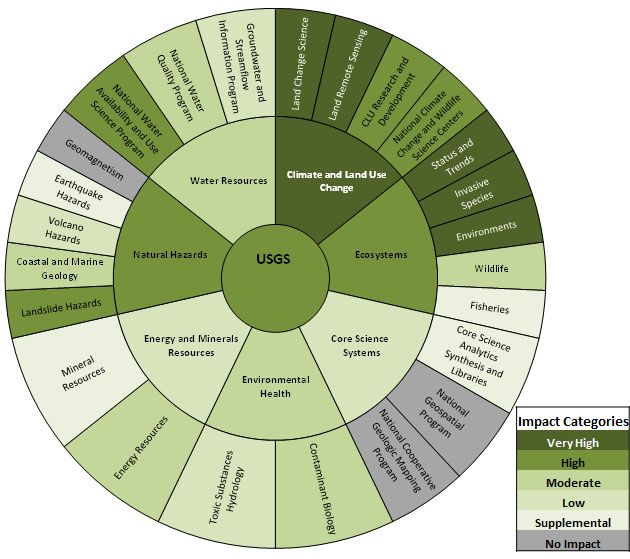The USGS initiated the Requirements, Capabilities and Analysis for Earth Observations (RCA-EO) activity in the Land Remote Sensing (LRS) program to provide a structured approach to collect, store, maintain, and analyze user requirements and Earth observing system capabilities information. RCA-EO enables the collection of information on current key Earth observation products, services, and projects, and to evaluate them at different organizational levels within an agency in terms of how reliant they are on Earth observation data from all sources, including spaceborne, airborne, and ground-based platforms. Within the USGS, RCA-EO has engaged over 500 subject matter experts in this assessment and evaluated the impacts of more than 1,000 different Earth observing data sources on 345 key USGS products and services. Among Earth observing systems that support all seven USGS mission areas, Landsat is ranked fourth among all systems and second among remote sensing systems. The majority of USGS users are satisfied with current Landsat data but desire higher spatial and temporal resolution, easier data processing, and improved data access. Using the Landsat example, RCA-EO has demonstrated that it offers a unique opportunity to understand the impact of Earth observations on USGS mission areas, programs, and key products and services, from which analysts can infer gaps in user needs and guide decisions on system improvements or new sensor design to improve user satisfaction in the USGS and beyond. RCA-EO activity is seen as an enduring need given that rapidly increasing observation capability and capacity will lead to changing user requirements over shorter periods.
http://remotesensing.usgs.gov/rca-eo/analysis

Impact of Landsat on USGS mission areas and programs

